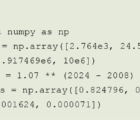The buzzword in business today is disruption, as industry after industry faces the disruptive potential of technological leaps, a point brought home by a quartet of business leaders at the closing session of the CAS Centennial Celebration and Annual Meeting in New York in November.
The importance of actuaries and other bright minds was never far from the spotlight.
The panel — W. R. Berkley Corporation Chairman and CEO William R. Berkley; Hamilton Insurance Group CEO Brian Duperreault, ACAS; A.M. Best rating analyst Matthew C. Mosher, FCAS, CERA; and Vincent J. Dowling, managing partner of Dowling & Partners — also focused on how alternative capital is changing the business in their presentation, “The Future of the Insurance Industry — The Next 100 Years.”
Panelists agreed that the recent growth of pension and hedge fund investment was likely to have a lasting impact. This so-called “alternative capital” has poured into reinsurance, primarily catastrophe business. There are signs that it is expanding to other lines.
Pension investors bring with them $30 trillion in capital, said Dowling. That’s enough to comfortably write the approximately $325 billion in catastrophe limits purchased every year, while still maintaining a disciplined, diversified pension portfolio.
Property-casualty actuaries and the rest of the industry have become so good at quantifying and estimating catastrophe risks that the new investors have grown comfortable underwriting reinsurance against them.
Panelists traced the story back to Hurricane Andrew in 1992. Losses from that storm were so much worse than the industry expected that insurers began to use computer models to quantify and manage risks. The industry had another shock in 2005, when Hurricane Katrina generated more losses than the computer models anticipated.
Insurers realized that they had to get better. They expanded computer capacity, capturing and analyzing even more sophisticated data. Today insurers are better managed than ever, said Duperreault.
The “Class of ‘93” insurers placed more importance on data and analytics, and the entire industry became more sophisticated.
“We’re in pretty good shape as an industry,” Duperreault said. “It’s no surprise we’ve drawn a crowd.”
Most of the capital growth has occurred in the past few years, with no Andrews or Katrinas to threaten it.
“We play chess in insurance,” Dowling said, “but they play speed chess.”
The next big storm might quell the tide, Duperreault said, but won’t force it to ebb.
If models err, “You’ll see some shock,” he noted. “You’ll see some withdrawal.” But even a devastating event won’t deter them forever, because the new investors are so much bigger than the catastrophe reinsurance market.
“Big changes for us are small changes for them,” Duperreault stated.
It may be better, panelists agreed, to ask how much more insurance this new breed will write. There are signs that new capital is expanding beyond catastrophe business into other lines, including casualty.
Catastrophe business, said Berkley, “is a heads or tails business.” Reinsurers lose money if a catastrophe strikes and make money if it does not.
Not so for the casualty business, where the events that drive profit and loss are less distinct and play out over several years.
Dowling predicts that the new capital will affect casualty markets, either through direct investment or by forcing traditional reinsurers to write more casualty business. Duperreault believes that reinsurers need to find ways to serve the new entrants, helping them write business and manage their insurance portfolios.
Beyond the capital threat, panelists noted, lies a technological challenge.
New technologies, such as increased computer power handling enormous data blocks, will profoundly impact the future, panelists agreed, particularly in the way insurance is distributed. Insurers may be able to use big data analytics to drive down the cost of administering insurance business.
Right now, Dowling noted, consumers pay $1 in premium and receive on average about 65 cents to cover losses. Most of the remaining margin covers administration of the business and distribution costs (agent and broker commissions). If insurers don’t narrow that margin, Dowling said, other companies will, especially Silicon Valley. “We play chess in insurance,” Dowling said, “but they play speed chess.”
They will find ways to streamline. They might use a home address, for example, to comb databases for enough information to write the risk.
Other technological advances, such as driverless cars or ridesharing, could shrink the personal auto insurance market to 10 percent of all property-casualty insurance written, down from the current 38 percent, Dowling said.
Finally, they will find ways to bypass agents and brokers — unless those parties can show that they add value beyond bringing the customer to market. Lower commissions and fees would reduce transaction costs.
“We have not really been disruptive as an industry,” Duperreault said. “We can’t sustain this high cost of transaction,” he added.
Their predictions could be daunting, but panelists discussed how high-level analytic experts, such as property and casualty actuaries, have a challenge and an opportunity.
Duperreault recommended that actuaries devote time to understanding new capital and the potential ramifications of big data and algorithmic decision-making. “And get into other parts of the business. Distribution costs are ripe for attack, and someone is going to make a breakthrough — why not us?”
James P. Lynch, FCAS, is chief actuary and director of research and information services for the Insurance Information Institute in New York.











